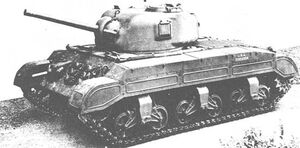So was reading some articles on Canada Military and the slow decline in keeping up to date military equipment and vehicles (example is the thirty year program that the government is doing get the Navy some new ships, but most people saying it should have been done 10-20 years ago.)
So your challenge is to change it so that while Canada military would defently decrease to a degree after the war, it's equipment remains up to date and decently numbered so that while the US would still remain a big factor in tangling with the country, Canada's own teeth would have a decent bit of their own-especially if buying time for US/Nato backup (example, some people were thinking that Canada would have a somewhat hard time stalling a county like Russia in artic waters until us backup could arrive in its current state.)
So your challenge is to change it so that while Canada military would defently decrease to a degree after the war, it's equipment remains up to date and decently numbered so that while the US would still remain a big factor in tangling with the country, Canada's own teeth would have a decent bit of their own-especially if buying time for US/Nato backup (example, some people were thinking that Canada would have a somewhat hard time stalling a county like Russia in artic waters until us backup could arrive in its current state.)
